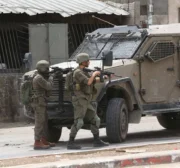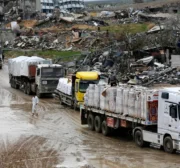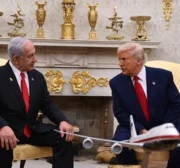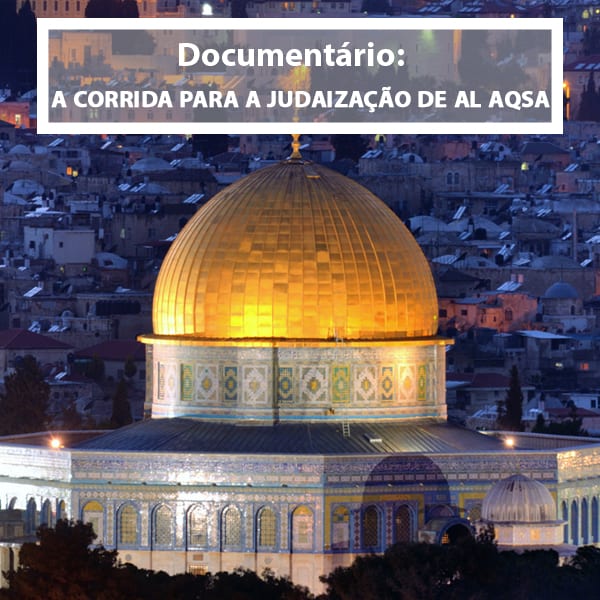O jornalista israelense Yossi Melman, especializado em assuntos de segurança, revelou o massacre de pelo menos 20 soldados egípcios na guerra de 1967. Ele afirmou em uma série de tweets em sua conta no Twitter, que os soldados egípcios “foram queimados vivos e enterrados pelo exército israelense em uma vala comum sem sinais de proximidade.” Jerusalém”.
1/7 Breaking News: After 55 years of heavy censorship, I can reveal that at least 20 Egyptian soldiers were burnt alive and buried by IDF in a mass grave, which wasn't marked&without being identified contrary to war laws, in Latrun. It happened during the Six Day's War>>> pic.twitter.com/mMe3LGIAoz
— Yossi Melman (@yossi_melman) July 7, 2022
No post acima, seguido da thread sobre o caso, Millman escreveu: “Após 55 anos de intensa censura, posso revelar que pelo menos 20 soldados egípcios foram queimados vivos e enterrados pelo exército israelense em uma vala comum não identificada e não identificada, contrariando as leis da guerra, em Latrun (perto de Jerusalém) “.
2/7 Days before the war Egypt's Nasser signed a defense pact with Jordan's Hussein. Egypt deployed 2 commando battalions in the West Bank near Latrun, which was no man's land. Their mission was to raid inside Israel and take over Lod and a nearby military airfields>>>
— Yossi Melman (@yossi_melman) July 7, 2022
3/7 Fire Exchanges took place with IDF troops and members of Kibbutz Nahshon. Some Egyptian troops fled, some taken prisoners, and some bravely fought. At a certain point IDF fired mortar shells and thousands of uncultivated dunams of wild bush in the dry summer were set on fire>
— Yossi Melman (@yossi_melman) July 7, 2022
4/7 At least 20 Egyptian soldiers died in the bush fire "the fire spread quickly in the hot and dry bush, and they have no chance to escape" I was told by Zeen Bloch (now 90 years) who was the military commander of Nachshon, a left-wing Kibbutz>>> pic.twitter.com/MZezYpb21m
— Yossi Melman (@yossi_melman) July 7, 2022
5/7 The next day IDF soldiers equipped with a bulldozer came to the scene dug a pit, pushed the Egyptian corpses and covered them with soil. Bloch and some Nahshon members watched with horrors as soldiers looted personal belonging and left the mass grave unmarked>>>
— Yossi Melman (@yossi_melman) July 7, 2022
6/7 Now lifting military censorship Block adds that "the veil of silence suited everybody. The few who knew didn't want to talk about it. We were ashamed. But above all it was IDF decision in the heat of the war". Official military documents unclassified omit the Latrun tragedy
— Yossi Melman (@yossi_melman) July 7, 2022
6/7 Now lifting military censorship Block adds that "the veil of silence suited everybody. The few who knew didn't want to talk about it. We were ashamed. But above all it was IDF decision in the heat of the war". Official military documents unclassified omit the Latrun tragedy
— Yossi Melman (@yossi_melman) July 7, 2022
7/7 All sort of horrors occurred in wars. In Israeli-Arab wars both sides committed war crimes. But presenting itself as a democracy Israel too often conceal unpleasant historical event covering it with the pretext of "national security". Real democracy must face its past.
— Yossi Melman (@yossi_melman) July 7, 2022
Sobre as razões da presença de soldados egípcios naquela área, Melman destacou que o falecido presidente egípcio Gamal Abdel Nasser, dias antes do início da guerra, havia assinado um acordo de defesa conjunto com o falecido rei da Jordânia Hussein bin Talal, que estava no controle da Cisjordânia. A este respeito, Melman disse: “O Egito mobilizou dois batalhões de comandos na Cisjordânia perto de Latrun, que era então uma terra de ninguém. Sua missão era atacar dentro de Israel e tomar Lydda e aeroportos militares próximos.”
O jornalista israelense citou Zain Baloch, 90, que na época era o comandante militar do Kibutz Nahshon, um kibutz de esquerda, dizendo: “O fogo se espalhou rapidamente no mato quente e seco, e eles não tiveram chance de escapar. “No dia seguinte, os soldados do exército vieram, equipados com uma escavadeira, foram ao local e cavaram um buraco e empurraram os corpos egípcios e os cobriram com terra.”
Vale ressaltar que na guerra de 1967, o exército israelense derrotou os exércitos árabes e ocupou a Cisjordânia, incluindo Jerusalém Oriental (estava sob controle da Jordânia), a Faixa de Gaza (estava sob controle egípcio), a Península do Sinai e as colinas sírias de Golã.
LEIA: 6.4 milhões de palestinos são refugiados, confirma relatório


![Jornalista israelense Yossi Melman faz revelações sobre o massacre de 20 soldados egípcios na gerra de 1967 [Yossi Melman/Twitter]](https://www.monitordooriente.com/wp-content/uploads/2022/07/FXHKOybWQAEGrNY-1-1067x800.jpg)







